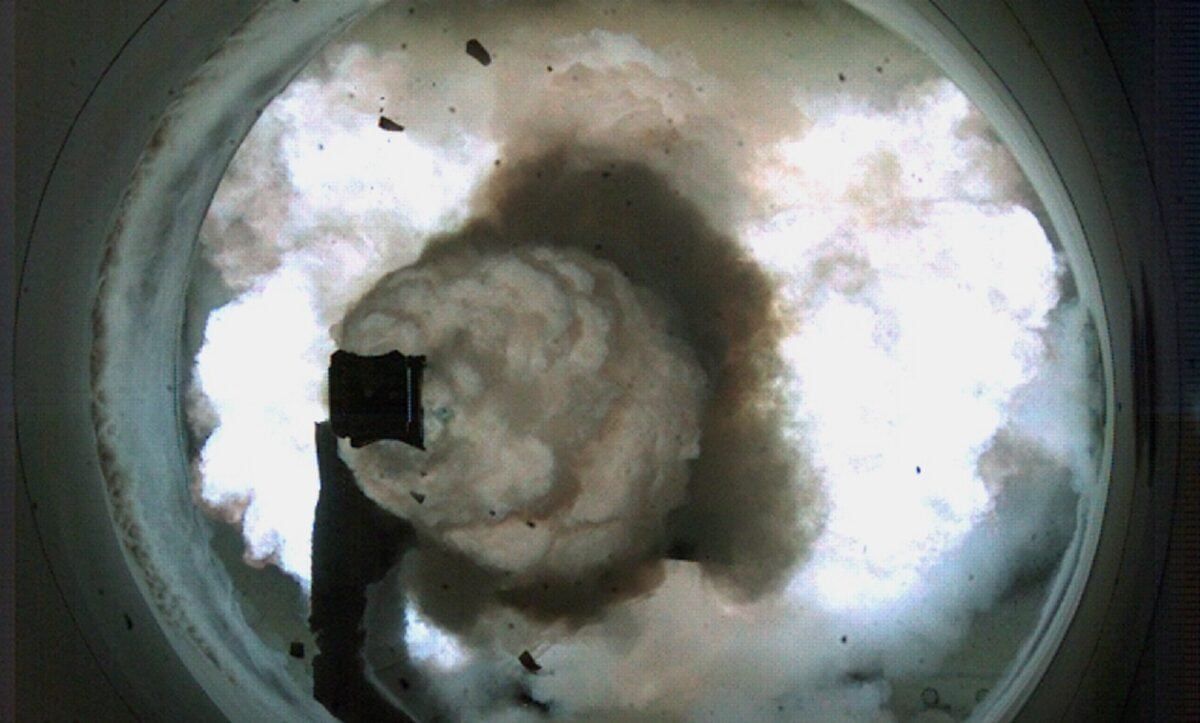U.S. Navy electromagnetic-pulse firing Railgun weapons technology had reached a substantial measure of technological maturity and been demonstrated in promising ways before the Navy decided to abandon the effort in 2021.
Instead, The service is focused on other key weapons systems such as hypersonics, electronic warfare (EW), and lasers for warships.
Nonetheless, it seems conceivable that railgun technology could once again re-emerge as testing and demonstrations showed promise over a period of many years.
Reigniting Railgun Development
Railgun weapons bring such force, power, and range that they are the kind of weapon that could hold enemies at risk from greater distances and attack targets with the firepower and kinetic energy force equivalent to a multi-ton vehicle moving at 160 miles per hour, developers have said.
Over a period of many years, the Office of Naval Research conducted a wide sphere of experiments and had on several occasions intended to arm its destroyers with railgun attack technology.
The energy or power of railguns is measured in units of electromagnetic power or force called megajoules, with one megajoule being the equivalent of a one-ton vehicle moving at 160 miles an hour. The service tested railgun force up to high numbers of megajoules ranging from 21 up to 32 or more megajoules. Railgun applications unleash a massive amount of force upon a target.
Railgun weapons work when electrical power charges up a pulse-forming network. That pulse-forming network is made up of capacitors able to release very large amounts of energy in a very short period of time.
The weapon releases a current on the order of 3 to 5 million amps—that’s 1,200 volts released in a ten-millisecond time frame, Navy and industry weapons developers have said.
That is enough force to accelerate a mass of approximately 45 pounds from zero to five thousand miles per hour in one one-hundredth of a second, Navy officials have explained.
Railguns: Technology Reboot
Due to its ability to reach speeds of up to 5,600 miles per hour, the hypervelocity projectile is engineered as a kinetic energy warhead, meaning no explosives are necessary.
The hypervelocity projectile can travel at speeds up to 2,000 meters per second, a speed that is about three times that of most existing weapons.
The rate of fire is 10 rounds per minute, Navy and industry developers explained during earlier phases of the weapon’s development, prior to cancellation.
The railgun can draw its power from an onboard electrical system or a large battery. The system consists of five parts, including a launcher, an energy storage system, a pulse-forming network, a hypervelocity projectile, and a gun mount.
The Navy, DoD, and even the Army had in recent years been experimenting with integrating the railgun hypervelocity projectile with existing weapons platforms such as the Navy’s 5-inch guns or Army Howitzer.

101210-N-0000X-001
DAHLGREN, Va. (Dec. 10, 2010) High-speed camera image of the Office of Naval Research Electromagnetic Railgun located at the Naval Surface Warfare Center Dahlgren Division, firing a world-record setting 33 mega-joule shot, breaking the previous record established Jan. 31, 2008. The railgun is a long-range, high-energy gun launch system that uses electricity rather than gunpowder or rocket motors to launch projectiles capable of striking a target at a range of more than 200 nautical miles with Mach 7 velocity. A future tactical railgun will hit targets at ranges almost 20 times farther than conventional surface ship combat systems. (U.S. Navy photo/Released)
Kris Osborn is the Military Affairs Editor of 19FortyFive and President of Warrior Maven – Center for Military Modernization. Osborn previously served at the Pentagon as a Highly Qualified Expert with the Office of the Assistant Secretary of the Army—Acquisition, Logistics & Technology. Osborn has also worked as an anchor and on-air military specialist at national TV networks. He has appeared as a guest military expert on Fox News, MSNBC, The Military Channel, and The History Channel. He also has a Masters Degree in Comparative Literature from Columbia University.
From the Vault
‘You Really Oughta Go Home’: F-22 Raptor Stealth Fighter Flew Under F-4 From Iran

